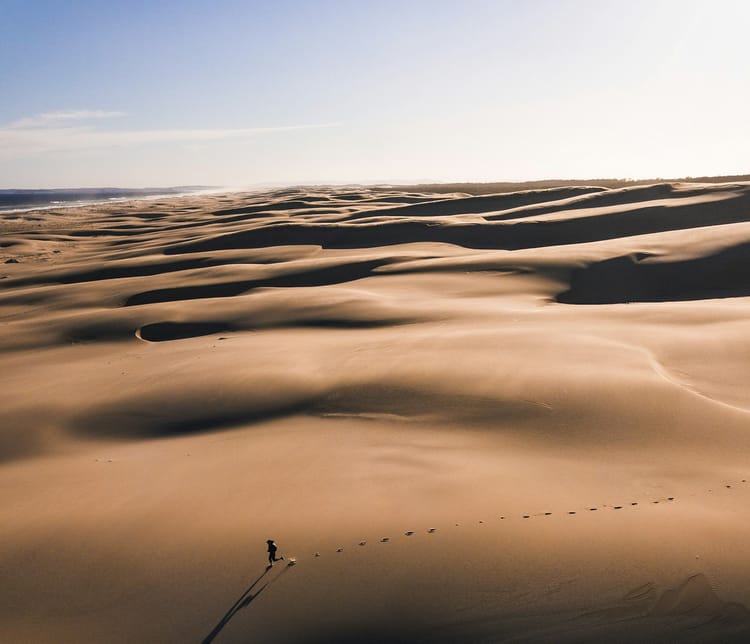Stone Soup #9: W-elk-ome to Braising - Rainy-Day Braise
Stone Soup is an ongoing quarantine feature in which I come up with a recipe that uses the impossible thing in your cupboard, without making you go to the store or wasting any of your ingredients. Yesterday, we did a donut experiment.
Sonya says:
Hi, I have a LOT of elk steaks and elk burger meat in the freezer from my sister-in-law our in WY and I honestly never thought I’d have to use it? But here we are. As far as other ingredients, we are huge into condiments so we have pretty much every kind of oil or spice. I’m good on staples except I’d rather not use up the spaghetti or rice on this. Can you substitute the elk burger for normal burger or is there something special about it?
How many of us are in this exact situation, looking at an edible novelty gift a relative gave us several years ago because they couldn’t think of a single thing we might like? I think the combination of tense, restless boredom and ambient desperation has driven all of us to the backs of our cupboards and freezers. So, let’s talk about ELK.
Elk, in this context, almost certainly refers to the biggest kind of deer. Apparently, in a real wallop of linguistic tomfoolery, some people refer to moose as elk, but I feel like Sonya would have said that this was moose if it was moose, because that’s just not the kind of lede you bury. Elk has a reputation for being like a really lean version of beef without a gamey flavor. Ground elk can be substituted pretty directly for ground beef, especially if you add butter, oil, or egg to give it a little richness.
When it comes to elk steaks, the leanness of the meat can make it easy to wind up with dry meat if you’re not careful. That’s tricky to balance against the knowledge that this elk was probably from a wild animal, which always makes me want to be sure I’m cooking things thoroughly so I don’t wind up with, I don’t know. Elk Pox, or whatever.
This makes me lean toward a braise, which is a great approach for a lot of different kinds of meat, especially cheaper cuts of beef and pork. I have a basic braising formula that I use when I’ve got meat I don’t know what to do with, and I think it’ll work really well for Elk. So, let’s check out the building blocks of a
Rainy-Day Elk Braise
Note: All you really need for a braise is meat and liquid, so I’m going to describe my ideal braise and you should feel free to leave out whatever you don’t have.
Preheat your oven to 350°F. Go on. You and I both know you’ll forget if you don’t do it now. Also, wash your hands. Don’t forget the thumbs.
Step One: Prep. If my refrigerator was a portal to limitless produce, I’d do a very large dice/coarse chop to the following: Onions, garlic, shallots, carrots, celery, mushrooms. Really, any alliums you can get your hands on, plus some hearty root vegetables, will be great in this. I bet parsnips would go well, too. This is an excellent application for dehydrated mushrooms if you have them.
Thaw your meat, pat it dry, and cut it into big hunks. This recipe is assuming you’re using 1-2 pounds of meat. I get pretty sloppy when I’m breaking down meat for a braise — I really just want it to be able to fit in the pot well. If you need guidance, aim for 2” cubes.
For your braising liquid, set aside any of the following: red wine, dry white wine, sweet white wine, any kind of stock or broth. If you have tomato paste, that’ll come in handy, too.
Step Two: Brown the meat. If I’m making this myself, I’m using my dutch oven, because that will let me do this as a one-pot meal. Otherwise, use a big skillet with high sides for this.
Throw a knob of butter or a heavy glug of oil into your pan and turn the heat to medium. Elk is lean, so you shouldn’t expect fat to render out of it, but it’ll still put some good flavor in your pan. Once the butter is melted or once the oil starts to shimmer, throw the meat into the pan. Immediately hit it with some seasonings: salt, black pepper, garlic powder, onion powder, paprika, ground sage, and ground thyme will all be right at home here. I don’t recommend going very spicy with this recipe, but you know what flavors you usually like; do what your heart tells you is right. You just need the meat to be brown on the outside, not cooked through.
Step Three: Vegetables. Once the meat is browned, remove it from the pan and add the vegetables along with a splash of whatever liquid you wanted to use for braising. That liquid should boil right away, and you can use it to loosen any Flavorsome Bits the elk left stuck to the pan. Raise the heat to high. Whack the vegetables with a little seasoning, but go easy on the salt at this point. Keep them moving a lot — your goal isn’t to cook them through, just to get some brown on them. Brown is a good color for food to be. It’s a flavor-color. Mmmm, brown.
Step Four: Basic Assembly. The instant the vegetables start to pick up some color, reduce the heat to low and return the meat to the pan. Immediately add your braising liquid. I’d probably go with 2 cups of wine and 2 cups of stock or broth to start. (If you’re not sure what combination of wine and stock to use, keep color families together: white wine with chicken stock, sherry with vegetable stock, red wine with beef stock. This isn’t a hard and fast rule, but it’s a good place to start.) You want everything to be just barely covered by the liquid. If 4 cups of liquid doesn’t do the job, err on the side of adding stock or broth, so you don’t go through your stash of wine too quickly.
Step Five: Zoom, enhance. This isn’t enough flavor, as far as I’m concerned. Add what I think of as Chunky Spices: whole peppercorns, cardamom pods, a cinnamon stick, bay leaves. If my pantry is unlimited, I’ll also add some more umami flavors in here: worcestershire sauce, soy sauce, mushroom preserves, even a little miso paste wouldn’t hurt. Give it a gentle stir. Finally, since elk is so lean, I would drop a few tablespoons of cold butter on top of everything.
Step Six: Braise time. Put the lid on your dutch oven, or transfer everything from that skillet into a container with a tight-fitting lid. Now, everything goes into the oven for a while. After thirty minutes, take a peek, give it a gentle stir, add liquid if it’s looking dry.
Depending on the meat, your oven, and the whims of a fickle god, the elk should take 1-2 hours to cook. You’ll know it’s done when you can pull it apart with gentle application of a fork. It should fall right apart.
That’s it! You did it, you cooked that elk! Serve with bread, or potatoes, or treat it like a very hearty stew.
Oh, and if you change your mind about using pasta, you can make a quick roux (2 tbsp butter, melted and foaming in the pan, plus 2 tbsp flour, stir stir stir until it’s a nice friendly brown), then spoon the braising liquid into the pan and whisk together to form a nice velvety smooth sauce. Spoon that sauce over egg noodles or bow ties or whatever you like, and top with the tender meat and vegetables from the pan.
Just the recipe:
Rainy-Day Elk Braise
- Break down alliums, vegetables, and mushrooms of your choice, leaving the pieces pretty large. Do the same thing to 1-2 lbs of elk meat.
- Brown the elk meat in a dutch oven or large skillet with oil or butter, salt, and seasonings. Possible seasonings to consider: black pepper, garlic powder, onion powder, paprika, ground sage, ground thyme.
- Remove the browned meat and add the vegetables, along with a splash of wine or stock to deglaze the pan. Brown and season the vegetables over high heat.
- Return the meat to the pan along with 2 cups of wine and 2 cups of stock. Add a few splashes of soy sauce and a few splashes of worcestershire sauce. Also, add additional seasonings: bay leaves, a cinnamon stick, whole peppercorns. Add more liquid if needed, to cover the meat and vegetables completely. Also add a few tablespoons of cold butter.
Cover with a tight lid and braise at 350°F for 1-2 hours, stirring occasionally and adding liquid as needed. When fully cooked, meat should be fork-tender.
Serve with bread, potatoes, or as a hearty stew.






Member discussion